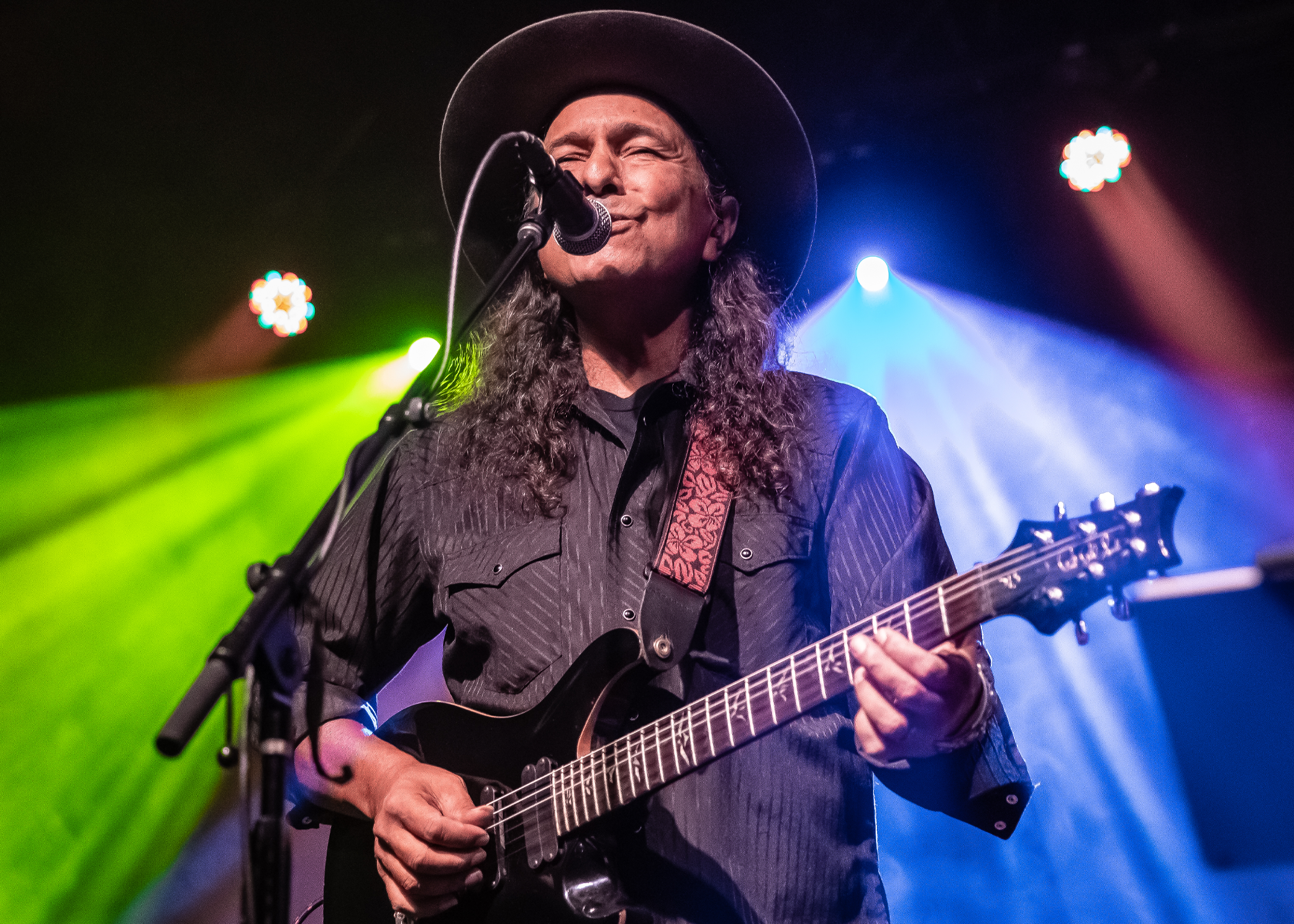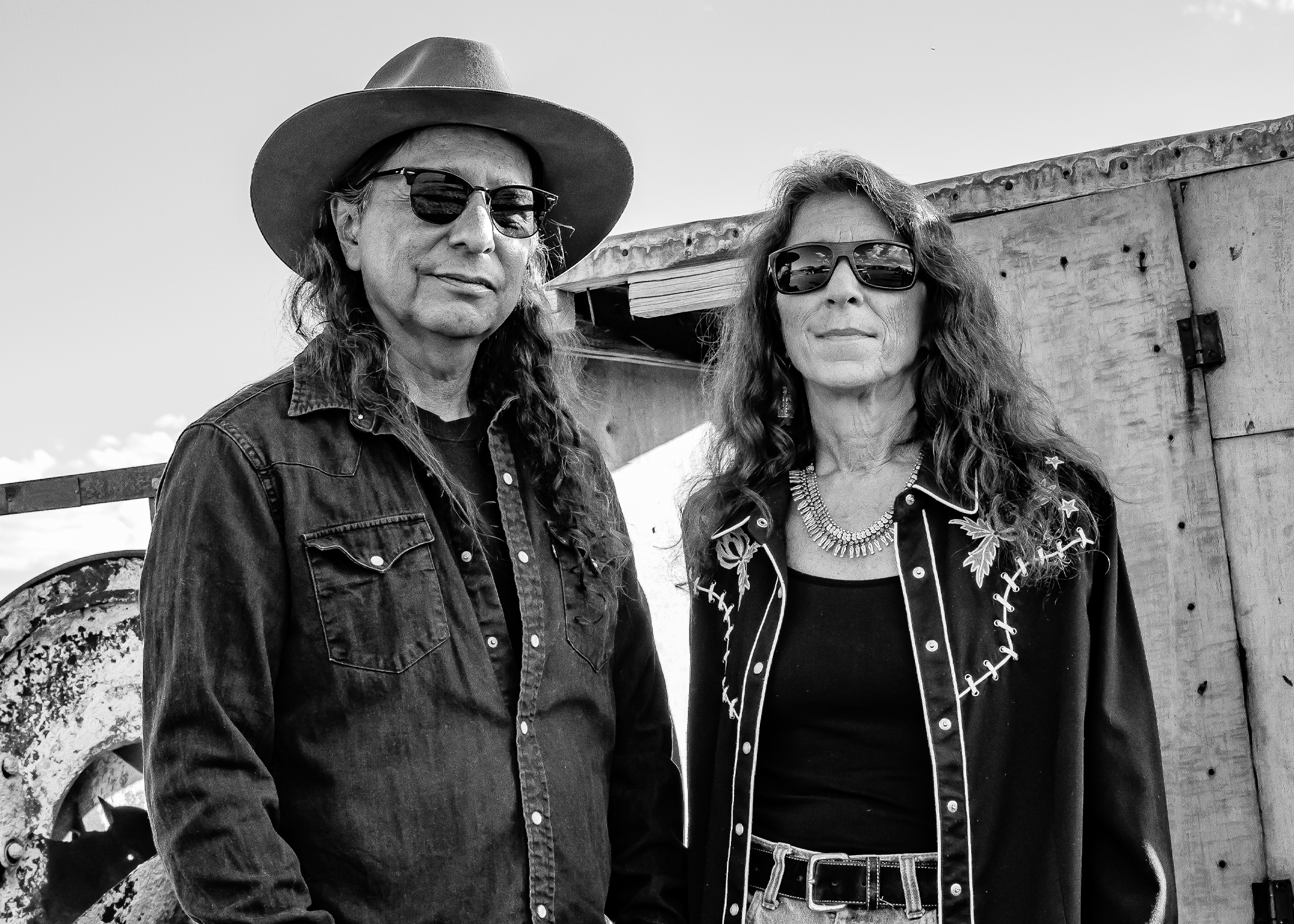
Backstage Flash

Audio By Carbonatix
“Nothing can stop the cold approach of the evening coming on,” Cary Morin sings on “Big Sky Sun Goes Down,” the opening track of his new album, Innocent Allies. He continues to muse, steeling himself for what’s to come: “Down deep in the distance lingers a figure old as the stones / Beneath us is a song to me / This land is talking to me / I cannot falter now.”
Morin has been lauded throughout his long career for masterful guitar playing and a diverse blend of influences (blues, folk, soul, bluegrass), crafting a sound that has often been called Native Americana. Innocent Allies illustrates a world of mysterious loners: ranchers and hunters, warriors and outlaws, some dealing with loss or late for waiting lovers, and some facing a noose. These colorful phantoms float through dead-on descriptions of wintry western landscapes (it’s a terrific album for a snow day), dressed up by the sheer beauty of the tunes. Acoustic and pedal-steel guitar lines soar and swoon above perfectly balanced droplets of piano, all of it intertwined with Morin’s smooth, sad vocals, which have just the right amount of gravel tossed in. The whole thing sounds as though it came straight out of the ’70s – and hearing that description suits Morin just fine. “I’m kind of shooting for that,” he admits.
After all, the 1970s were a particularly formative time for him. Morin, who now lives in Fort Collins, spent most of that decade as a young musician coming of age in Great Falls, Montana, trying out various instruments (piano was his first) in a music-friendly household, playing in bands, catching the occasional supergroup show and hanging around clubs picking up tips from local musicians. He was inspired by a wide range of players, especially “all the acoustic guys,” he says, including Mark Knopfler, Neil Young, James Taylor, Andrés Segovia and Chet Atkins.
“It was a really good place to grow up, and a really good place for music, too,” he reflects of Great Falls, which he describes as being situated “along the Canadian border…right in between Minneapolis and Seattle.”
“When I was a kid, these bands that were touring around would stop” in the town, he recalls. “Back in those days, in the ’70s, some of the bands that were kind of up-and-coming would come and play the state fair. … I saw Heart, Eric Clapton came through town, Van Halen came through town, John Denver – all these artists that you wouldn’t expect to be playing a little town up in Montana.”
The local artists had an impact on Morin, as well. “It was the same clubs, and the bands had house gigs at them, so they didn’t go anywhere,” he says. “We could go around and hear these guys that played every night. When you play every night, you get to be a pretty good player. We’re talking guitar players and keyboard players and fiddle players that did nothing but play music, and they were approachable. If I was to walk into a place with my friends and they saw us come in, they would get me on stage to play some songs, and it was a great way for me to get acquainted with a live situation and playing with a rhythm section. I could play anything and those guys could follow me; they didn’t have to know the song or have heard it or even be aware of it – they could follow whatever I did.”
Such a music scene gave the town vibrancy, but Great Falls was still colored by shades of the past. Morin is a Crow tribal member of both Crow and Assiniboine heritage, and his grandfather was Robert Yellowtail, a prominent twentieth-century leader and defender of their people. Yellowtail was mentored by the legendary Chief Plenty Coups and acted as a key negotiator in several seminal land and water disputes in the region. Montana was indelibly marked by the wanderlust-afflicted European rustlers, ranchers, developers and artists who migrated to the West, forever altering it.
Innocent Allies is a loving homage to this entire rich brew, but the album takes its title, structure and themes from one particular icon: the oil painter and past Great Falls resident Charles Marion Russell (1864-1926). Russell was and is a towering figure in the area: The high school that Morin attended still bears his name, and he was affectionately known as “Kid” Russell and the “Cowboy Artist.” He was a prolific and romantic chronicler of Western and Native life in his paintings, producing more than 2,000 of them, which still fetch prices of over a million dollars at auction today. Russell achieved fame in his lifetime (largely through the marketing savvy of his wife, Nancy), and was an advocate for Indigenous people as well as an influence on the nascent Western film genre.
“His work is everywhere,” Morin says of Russell’s impact on Montana. “His paintings were all over the state, in schools; everybody had a print or two or three in their house…so it was kind of a part of life. For instance, one in particular, probably the first of his paintings I saw…his painting ‘Indian Hunters’ Return’ always hung in my grandfather’s house as long as I could remember.”
Each of the album’s fourteen tracks is linked to Russell’s paintings. Some share a title and theme, others are more subtle. The album’s cover and title, for example, refer directly to the painting “Innocent Allies,” which depicts a trio of horses grazing on a bluff while their riders commit a stagecoach robbery on the plain below.

Cary Morin and Celeste Di Iorio.
Backstage Flash
Morin originally intended to create an album of Willie Nelson covers, but he says he “just couldn’t really get next to the idea of recording an entire album of songs I didn’t write.” So he changed gears, deciding he would write the songs and record them in the same style as Nelson’s 1975 album, Red Headed Stranger. “And then I started thinking more and more about these paintings, and they were just two ideas that kind of got glued together,” Morin recalls. “I started thinking about: When you look at a painting, what’s the backstory? How did this moment come to be?”
Much of the album was written while on the road in the family RV, relaxing at secluded spots and visiting family, a pile of Russell books on hand. Fed by the painter’s work, Morin’s flair for storytelling blossoms in the album’s lush ballads (“Waiting and Mad,” “Indian Hunters Return”) and doses of borderline-outlaw country both rollicking (“Big Nose George’s Outlaw Blues”) and agreeably poky (“Old Timers Poem”). The songs were eventually “meticulously brushed and groomed,” as Morin puts it, by Grammy-winning producer Trina Shoemaker, whose star-studded discography includes recordings by Tanya Tucker, the Indigo Girls, Murder by Death and Queens of the Stone Age.
A virtuoso, Morin handles most of the guitar on Innocent Allies, including acoustic, pedal steel, electric and bass, but a crew of talented friends lends accompaniment. The piano work by Eric Adcock and John Magnie, as well as the harmonica by Nic Ramirez and Nic Clark, are especially vital to the ’70s ambience. While discussing the album, the songwriter meticulously extols his collaborators’ virtues, singling out each by name and region; some are neighbors, others from locales across the country.
Of special note is Morin’s longtime partner and collaborator, Celeste Di Iorio, who provides additional vocals that expand on and harmonize with his own throughout the album. The two frequently perform live together as the Cary Morin Duo. Morin is currently in the process of booking the Innocent Allies tour, as well as brainstorming possible multimedia presentations. It would be ideal, he says, to collaborate with museums that have Russell paintings in their holdings (the Denver Art Museum happens to be one). As familiar as he is with them, he still loves to experience the originals.
“I always really appreciate going out, seeing those, the actual paintings,” Morin concludes. “It’s always been a hoot to see his stuff.”
Innocent Allies is available as a digital download and compact disc at carymorin.com. Information on tour dates can be found on his website.